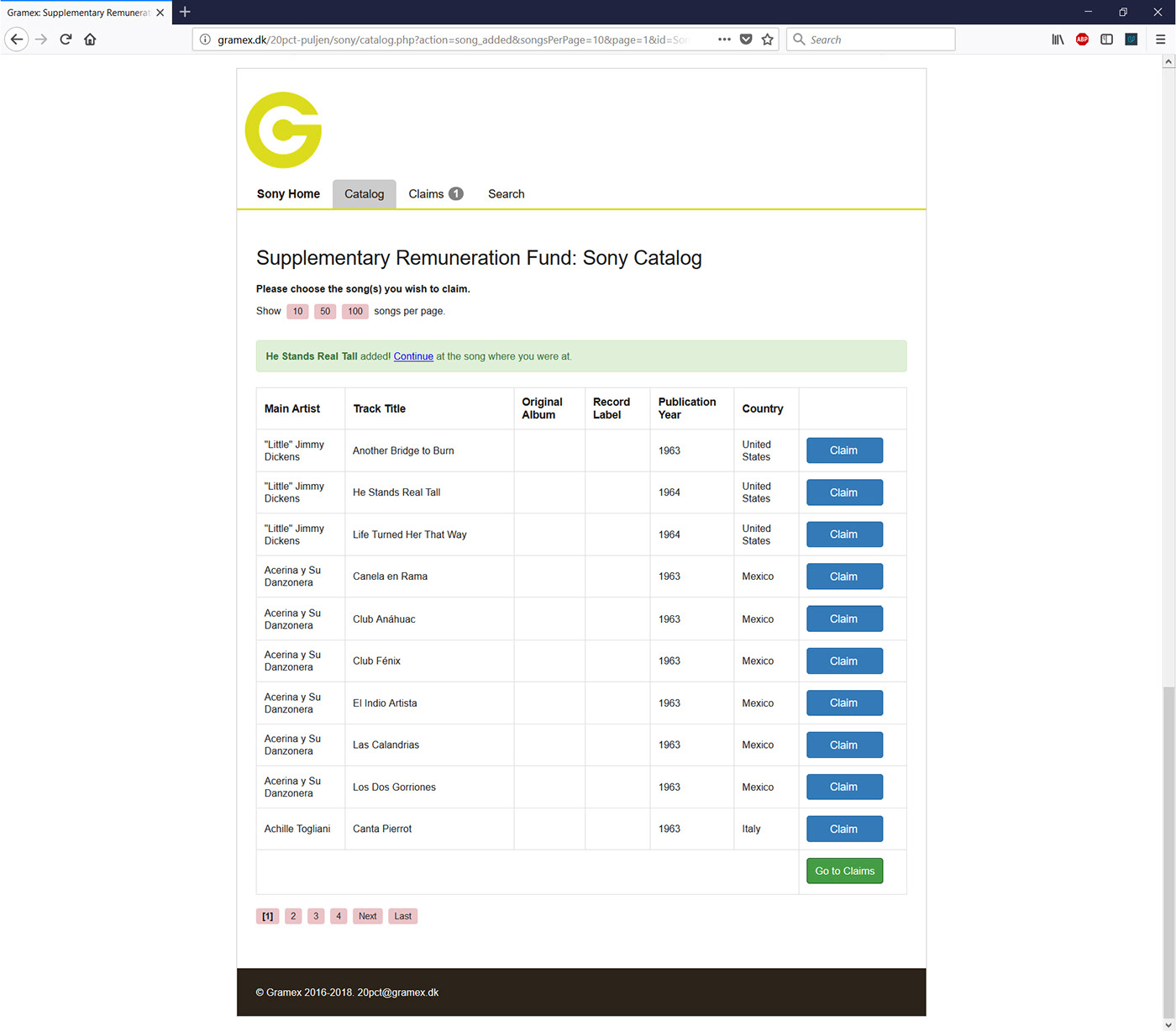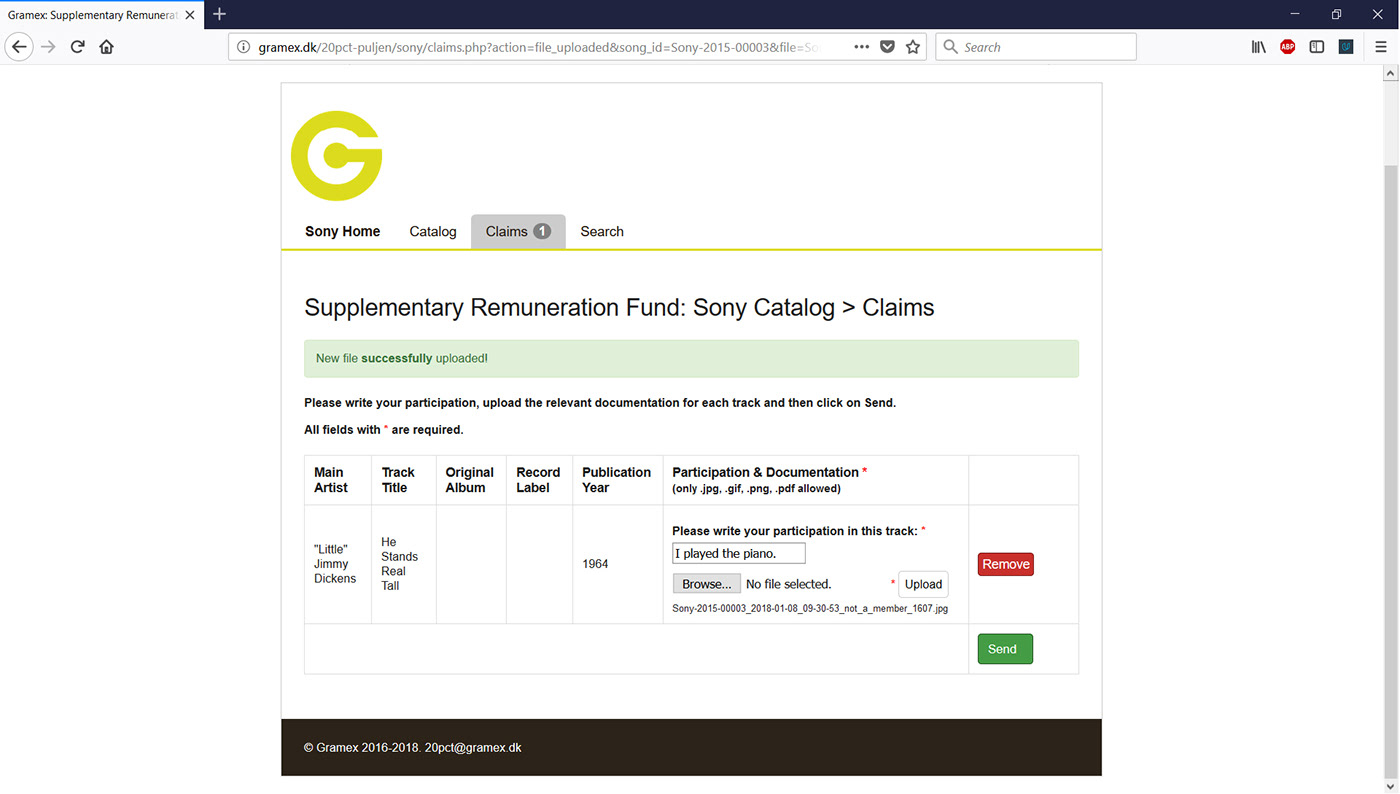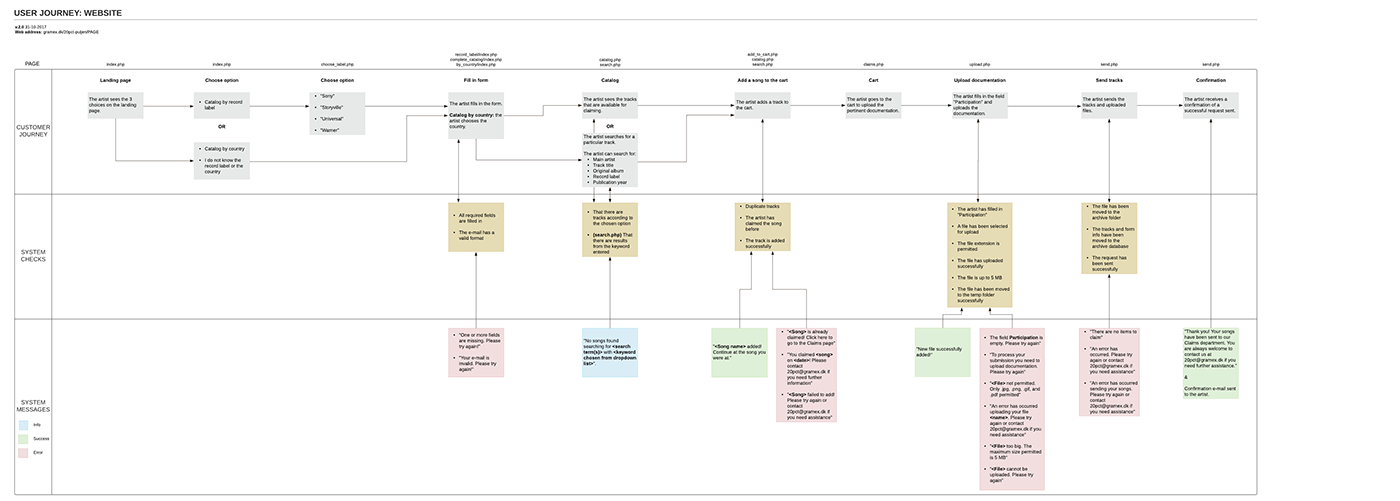Automation of a Process for Royalty Collection: Programming Phase
20%-puljen is one way in which artists can collect royalties for tracks they have collaborated in. The Claims Department (from here on, Claims) has handled this manually and wished to have a website to automate this process. Artists would receive the link, choose the tracks, upload their supporting documentation and send the list to Claims for further processing and payment.
My Role
In this project I undertook the UX Designer and the Programmer roles, applying the tools and methods as explained in each phase.
Timeline

Tools and Methods
- HTML
- CSS
- Javascript
- PHP
- MySQL
- Writing technical and non-technical documentation
The Process
The UX Design Phase helped me to study and understand the manual process. From it I was able to identify pain points and derive requirements for the website, that I then programmed from scratch.
The solution is a website with the structure and behavior of an online shop. The landing page gives artists three possibilities to access the track catalog. After choosing the point of entry, they will fill in a form with their information. Then the tracks will be displayed according to the selected point of entry, for ex. The Sony tracks will be shown if the artist chose Sony as their record label.
Here the artist will choose or search for the tracks they want to claim, add them to a “cart”, upload the pertinent documentation and send the request to Claims. Claims will receive a link pointing to the files, including an XML file that they will enter into another internal system to generate the payment.
The page features:
- Pagination: to display the 4000 songs in a user-friendly manner
- Basic form verification: that all required fields are filled in, basic e-mail validation, etc.
- Basic checks: for song duplicates, approved file formats, file size, songs added, that the artist has not claimed the same song within the claiming period, etc.
- Success, information and error messages
The following screenshots illustrate the intended flow of the website.The landing page provides artists with 3 different points of entry. The track list will be displayed according to what was chosen.

The landing page provides artists with 3 different points of entry. The track list will be displayed according to what was chosen.

After choosing “Catalog by record label”, the artist is presented with the four available record labels.

The solution is open to Gramex members and non-members alike, which is why the website asks for the artist’s information. If the artist is not a Gramex member, then the system will assign them a temporary number.

The artist can see the list with all the different songs or they can search for a specific track.

A track was successfully added to the “cart”, which is indicated in green and also in the #1 on the tab “Claims”. From here they will proceed to upload the pertinent documentation.

The artist has filled in their participation in the track and uploaded the supporting documentation. They can now send the request to Claims.

The artist has completed a request and will receive an e-mail confirmation shortly.

The e-mail confirmation sent to the artist.
End Result
The solution pleases both end users (Claims and the artists). The website facilitates the process of sending requests for the artists, and makes it efficient for Claims to handle incoming requests, expediting the processing of payments.
That said, I recommended Claims to consider the possibility of putting this solution behind a login system, to increase security and so that the artists can see their history of claimed tracks.
The documentation created for this project consists of a thorough documentation of the code, a design guide and a user journey that I adapted to act as non-technical documentation of the solution. It shows the intended flow to follow, together with what the system checks and which messages will be displayed to the artists.
Claims was particularly happy with the documentation made for them, which makes them understand in an easy manner how the website works.


